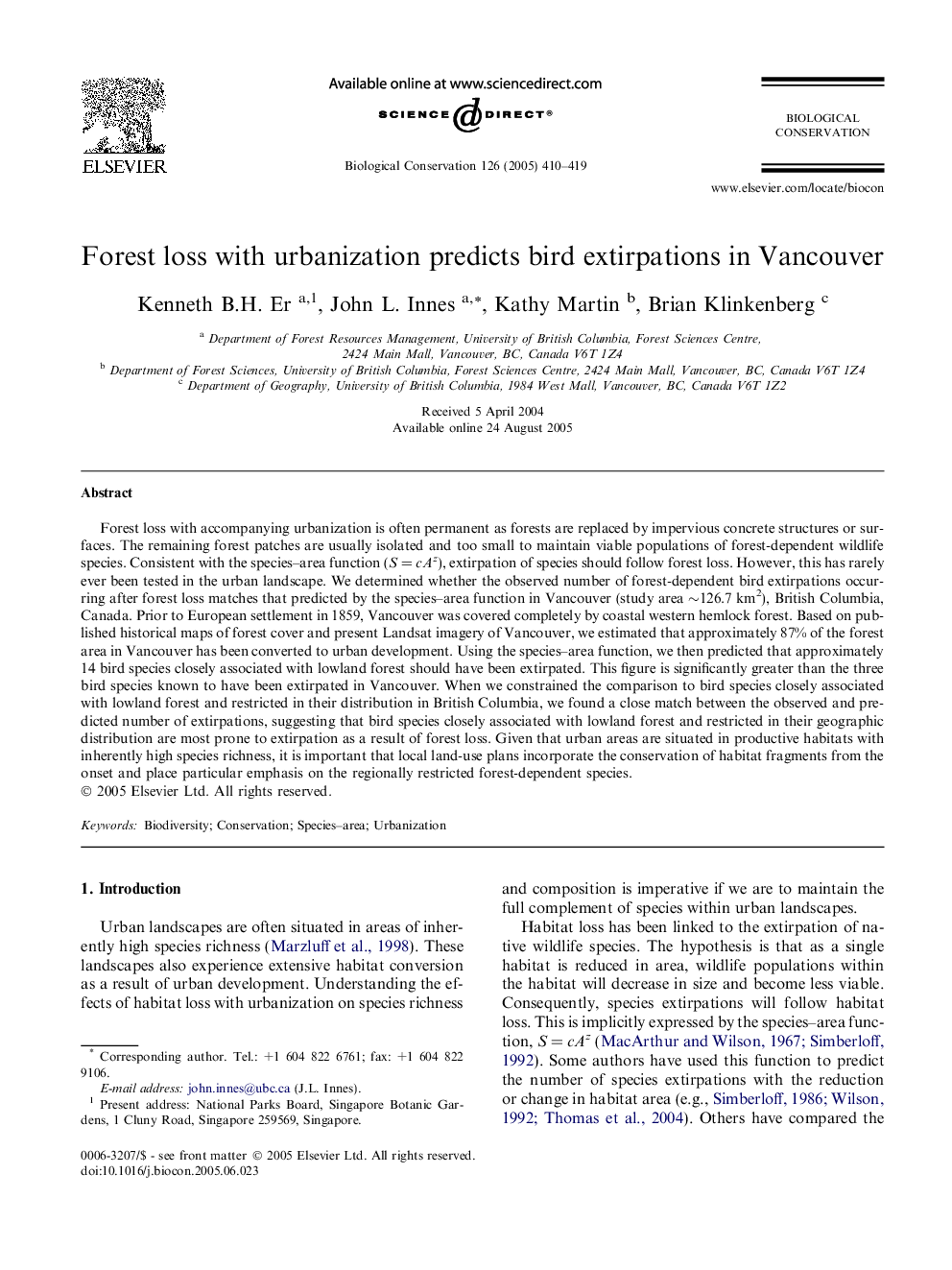| Article ID | Journal | Published Year | Pages | File Type |
|---|---|---|---|---|
| 9446018 | Biological Conservation | 2005 | 10 Pages |
Abstract
Forest loss with accompanying urbanization is often permanent as forests are replaced by impervious concrete structures or surfaces. The remaining forest patches are usually isolated and too small to maintain viable populations of forest-dependent wildlife species. Consistent with the species-area function (SÂ =Â cAz), extirpation of species should follow forest loss. However, this has rarely ever been tested in the urban landscape. We determined whether the observed number of forest-dependent bird extirpations occurring after forest loss matches that predicted by the species-area function in Vancouver (study area â¼126.7 km2), British Columbia, Canada. Prior to European settlement in 1859, Vancouver was covered completely by coastal western hemlock forest. Based on published historical maps of forest cover and present Landsat imagery of Vancouver, we estimated that approximately 87% of the forest area in Vancouver has been converted to urban development. Using the species-area function, we then predicted that approximately 14 bird species closely associated with lowland forest should have been extirpated. This figure is significantly greater than the three bird species known to have been extirpated in Vancouver. When we constrained the comparison to bird species closely associated with lowland forest and restricted in their distribution in British Columbia, we found a close match between the observed and predicted number of extirpations, suggesting that bird species closely associated with lowland forest and restricted in their geographic distribution are most prone to extirpation as a result of forest loss. Given that urban areas are situated in productive habitats with inherently high species richness, it is important that local land-use plans incorporate the conservation of habitat fragments from the onset and place particular emphasis on the regionally restricted forest-dependent species.
Keywords
Related Topics
Life Sciences
Agricultural and Biological Sciences
Ecology, Evolution, Behavior and Systematics
Authors
Kenneth B.H. Er, John L. Innes, Kathy Martin, Brian Klinkenberg,
